Single Crystals Meet Their Match in the Advanced Inorganic Lab
 Since the Nobel Prize in Physics was awarded to Lawrence and Henry Bragg in 1915,
X-ray diffraction has played an important role in elucidating the structure of matter
from diamonds to DNA to the ribosome. Two decades ago, collection and analysis of
X-ray data for small molecules was often a multi-week process. However, the recent
NIH funded acquisition of a state-of-the-art diffractometer to support graduate level
research in the Chemistry and Biochemistry Departments has enabled us to bring this
technology to the undergraduate lab.
Since the Nobel Prize in Physics was awarded to Lawrence and Henry Bragg in 1915,
X-ray diffraction has played an important role in elucidating the structure of matter
from diamonds to DNA to the ribosome. Two decades ago, collection and analysis of
X-ray data for small molecules was often a multi-week process. However, the recent
NIH funded acquisition of a state-of-the-art diffractometer to support graduate level
research in the Chemistry and Biochemistry Departments has enabled us to bring this
technology to the undergraduate lab.
The brighter x-ray source, enhanced area detector and modern software have transformed
the process of determining the precise location of atoms in molecules from two weeks
to two hours! “This has transformed what we can do in a short 7-week lab experience,”
states Professor Tom Richmond about his advanced Inorganic Lab course typically taken
by senior chemistry majors. Under the supervision of the X-ray Facility manager Dr.
Ryan Vanderlinden, students traveled to the medical school campus and literally saw
the structures solved before their eyes! Over 20 new molecular structures were synthesized
and characterized in the course and reported in a research style poster session in
the Ririe (“Dinosaur”) Room of the Crocker Science Center. Students saw symmetry
in action and several printed 3D models of their molecule at the Marriott Library. 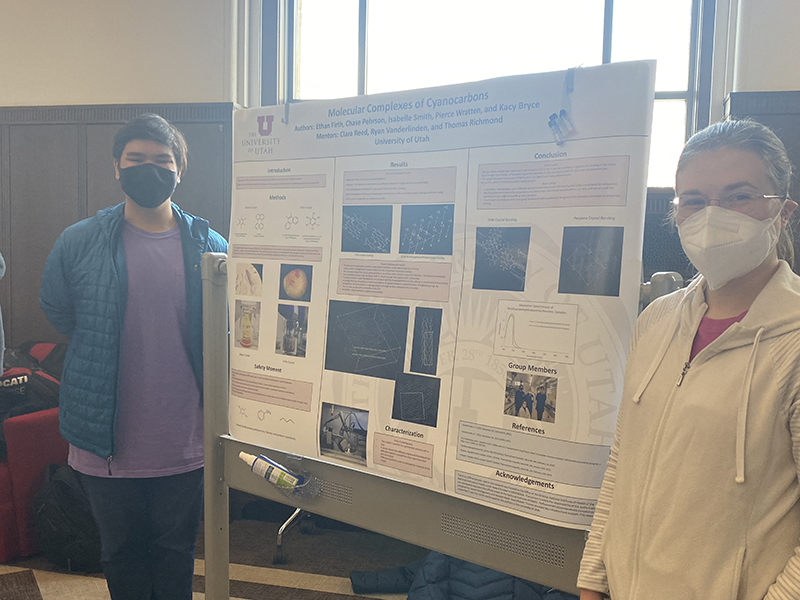
Anthony Couey, one of the participating students, said: "I participated in Professor Richmond CHEM 5730 Advance Inorganic Chemistry lab. The class was comprised of 7 senior chemistry students divided into 3 work groups and each group was working on a different base aldehyde. My group included Greg Cook and myself and we were working with 2,6-Dichlorobenzaldehyde. We combined our aldehyde with 3-(N,N-dimenthylamino)-1-propylamine to farm a Schiff base. We then reacted our ligand with W(CO)3(PrCN)3 to form our final complex. The ultimate objective was to make a tungsten complex that was capable of catalytic reactions as they can act like a multitool with certain species being replaceable. To test the functionality of our complex, we reacted it with KSCN and were able to successfully replace the chlorines on our complex with thiocyanates (SCN-). Through the entire project we determined characteristics through IR, NMR, and X-Ray Crystallography. Performing this synthesis and characterizing these structures was truly a highlight of my undergraduate career and I am certain to look back on this course fondly. The poster session was an exciting opportunity to show off our work and get feedback from some of the senior faculty. The 3D models I made for the poster session have even paid off with other professors approaching me to make models for some of their chemical structures."
 Adam Ford wrote: “Performing graduate-tier research in inorganic chemistry with Professor
Richmond at the helm was an amazing experience. As part of the seven people Saturday
morning section, along with our amazing T.A. Haruka Takenaka, we received a lot of
direct interaction with Professor Richmond. The major theme of the investigations
we conducted was to react a Schiff base with a tungsten compound, ideally breaking
a C-F bond in the process. I decided to pursue a naphthalene diamine backbone that
I reacted with 2-chloro,4-nitrobenzaldehyde to make a symmetric ligand with tons of
aromaticity and interesting properties. Most of the semester was spent attempting
to prove that what I had synthesized was real, and as such, I eventually amassed quite
a bit of experience in characterization techniques and methodology. At the end of
the semester, I managed to grow crystals of tungsten hexacarbonyl in a melting point
capillary tube, which ended up being a novel synthesis pathway for the compound. Presenting
this information to faculty and other students was an awesome opportunity that allowed
me to refine and clarify my findings, as well as outline all that I had learned that
semester. Professor Richmond pushed me to really grow as a chemist and researcher
by supporting my independent (and extremely stubborn) pursuit based upon all the knowledge
I had obtained over my undergraduate career.”
Adam Ford wrote: “Performing graduate-tier research in inorganic chemistry with Professor
Richmond at the helm was an amazing experience. As part of the seven people Saturday
morning section, along with our amazing T.A. Haruka Takenaka, we received a lot of
direct interaction with Professor Richmond. The major theme of the investigations
we conducted was to react a Schiff base with a tungsten compound, ideally breaking
a C-F bond in the process. I decided to pursue a naphthalene diamine backbone that
I reacted with 2-chloro,4-nitrobenzaldehyde to make a symmetric ligand with tons of
aromaticity and interesting properties. Most of the semester was spent attempting
to prove that what I had synthesized was real, and as such, I eventually amassed quite
a bit of experience in characterization techniques and methodology. At the end of
the semester, I managed to grow crystals of tungsten hexacarbonyl in a melting point
capillary tube, which ended up being a novel synthesis pathway for the compound. Presenting
this information to faculty and other students was an awesome opportunity that allowed
me to refine and clarify my findings, as well as outline all that I had learned that
semester. Professor Richmond pushed me to really grow as a chemist and researcher
by supporting my independent (and extremely stubborn) pursuit based upon all the knowledge
I had obtained over my undergraduate career.”
 |
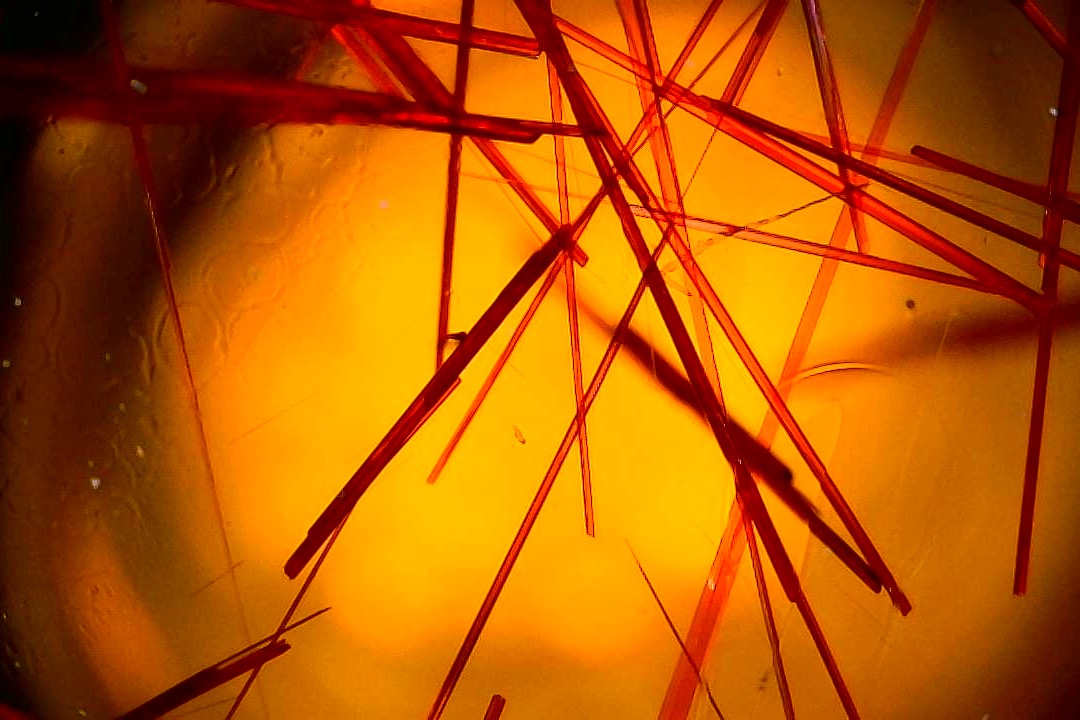 |
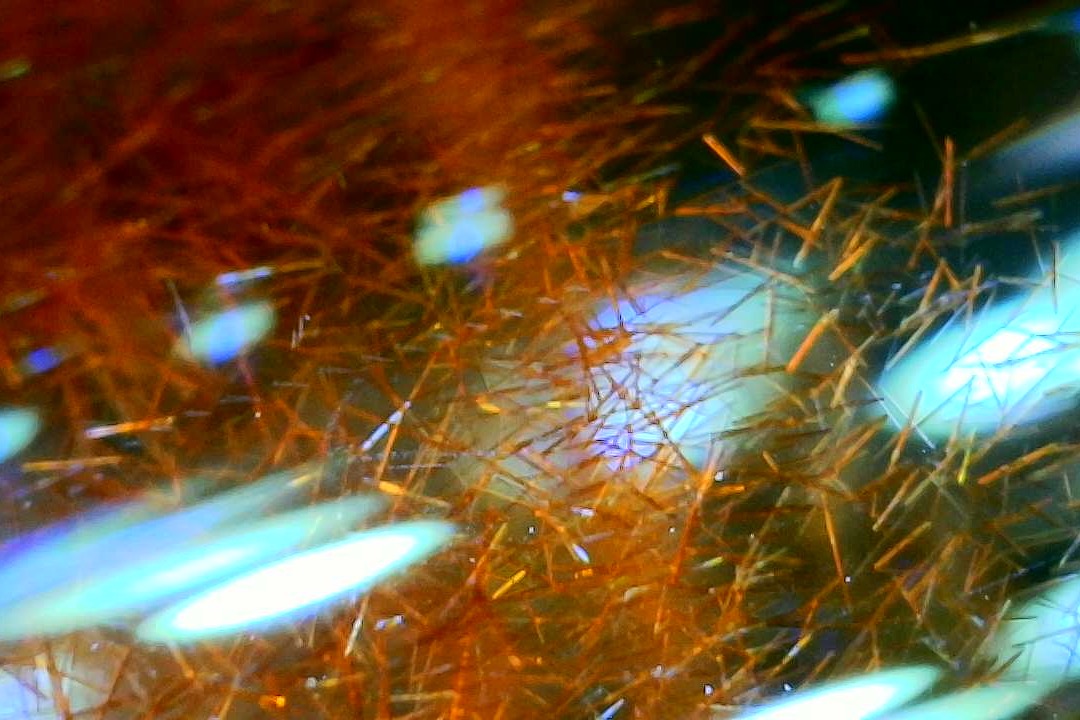 |
| 2 Chlorostructure Diffractometer | CN5 4RingN Tol: Cyclohexane | Lily CN5 |
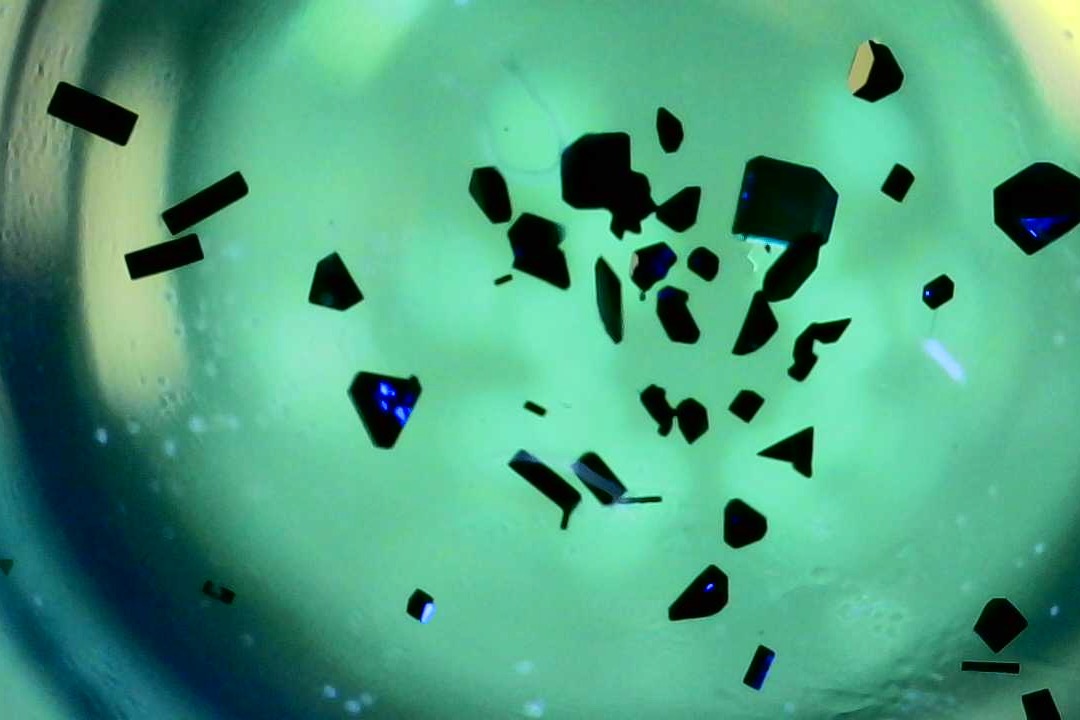 |
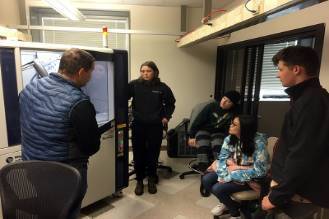 |
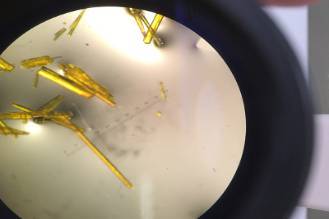 |
| Perylene C6N5CF3 Tol: Cyclohexane | Ryan Explains X-Rays | W2 Chlorocrystals |
